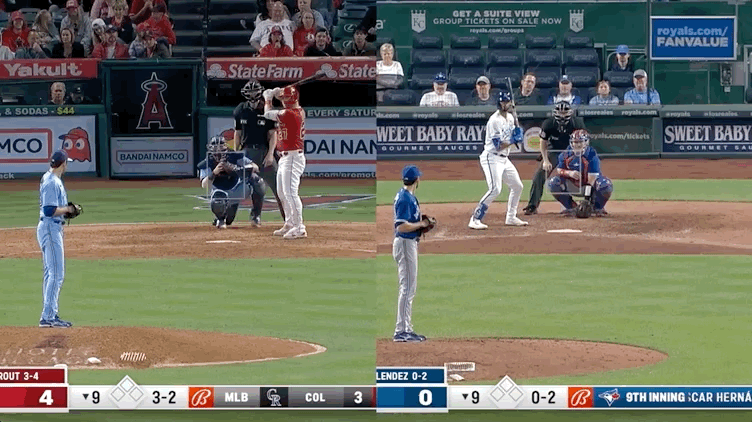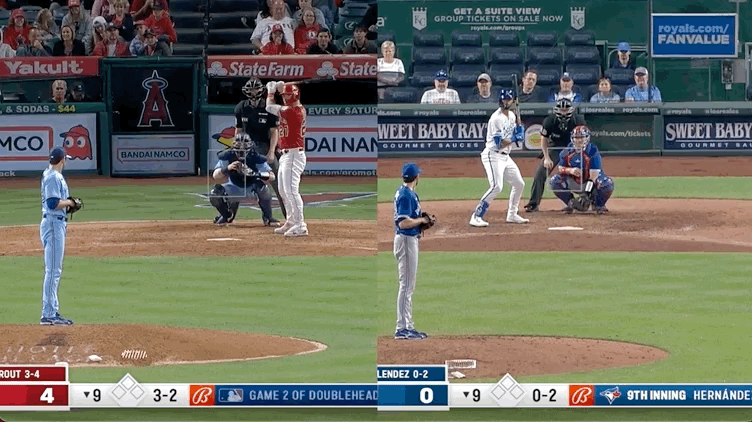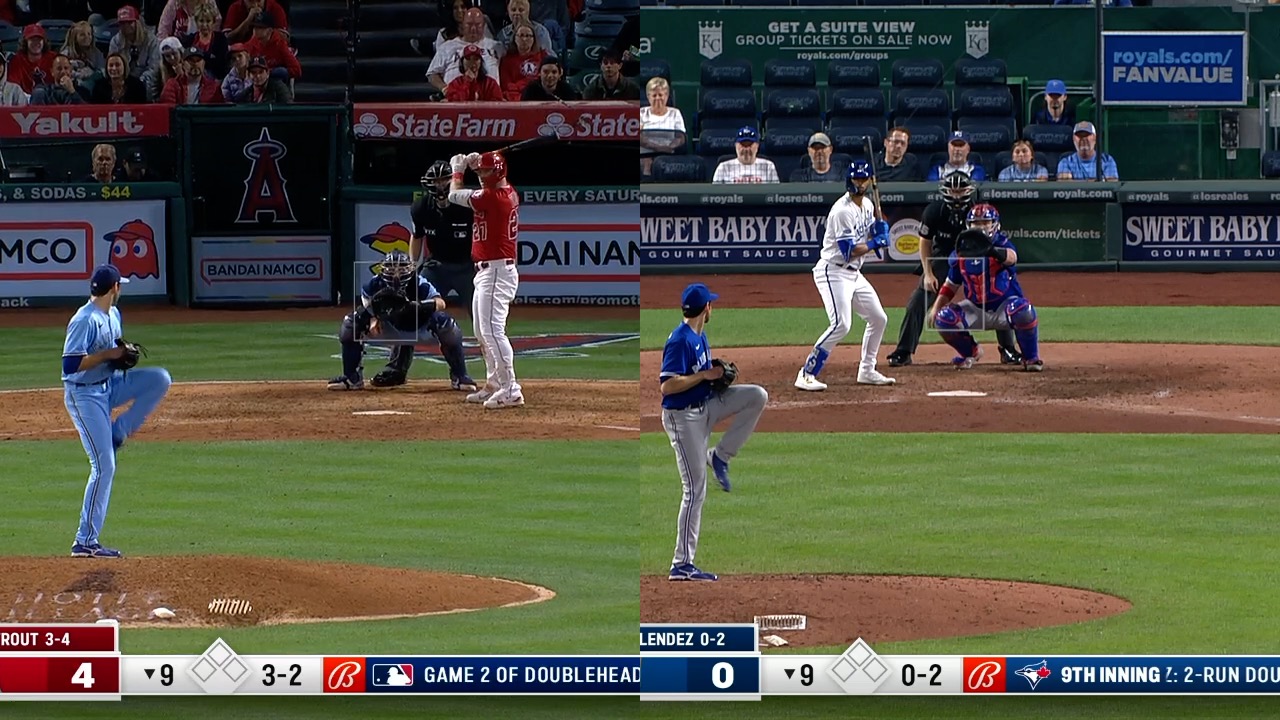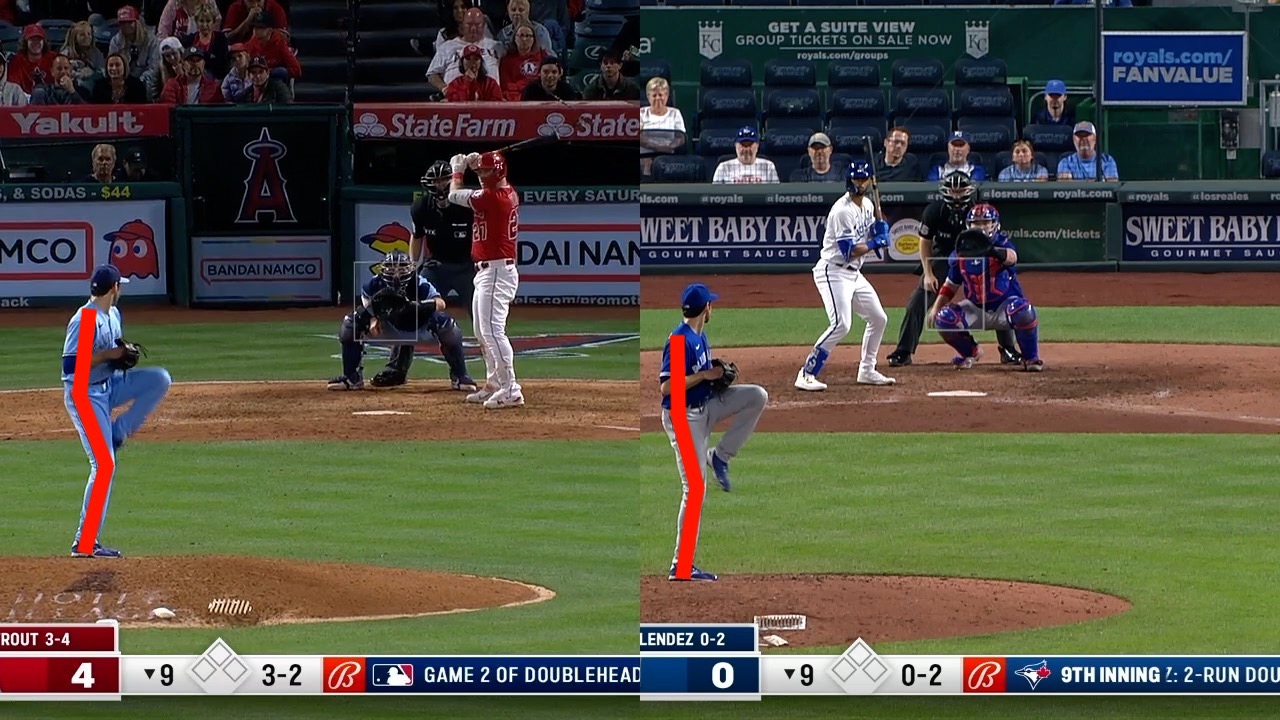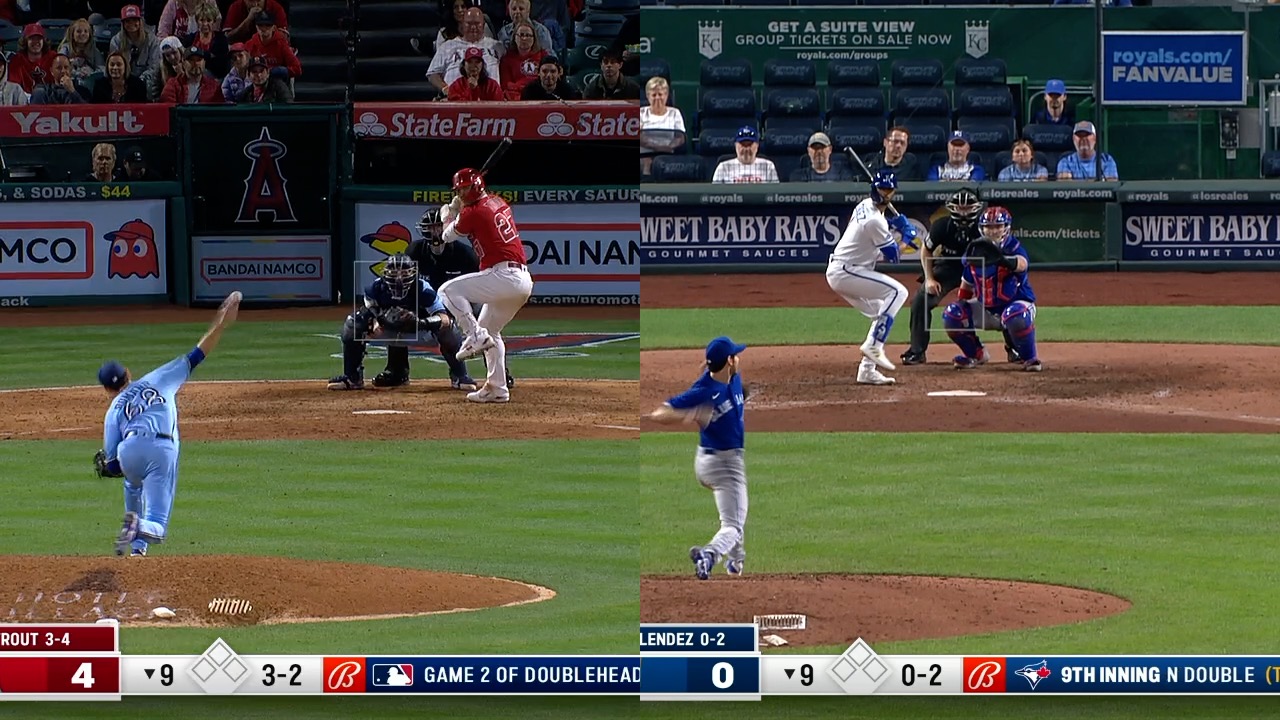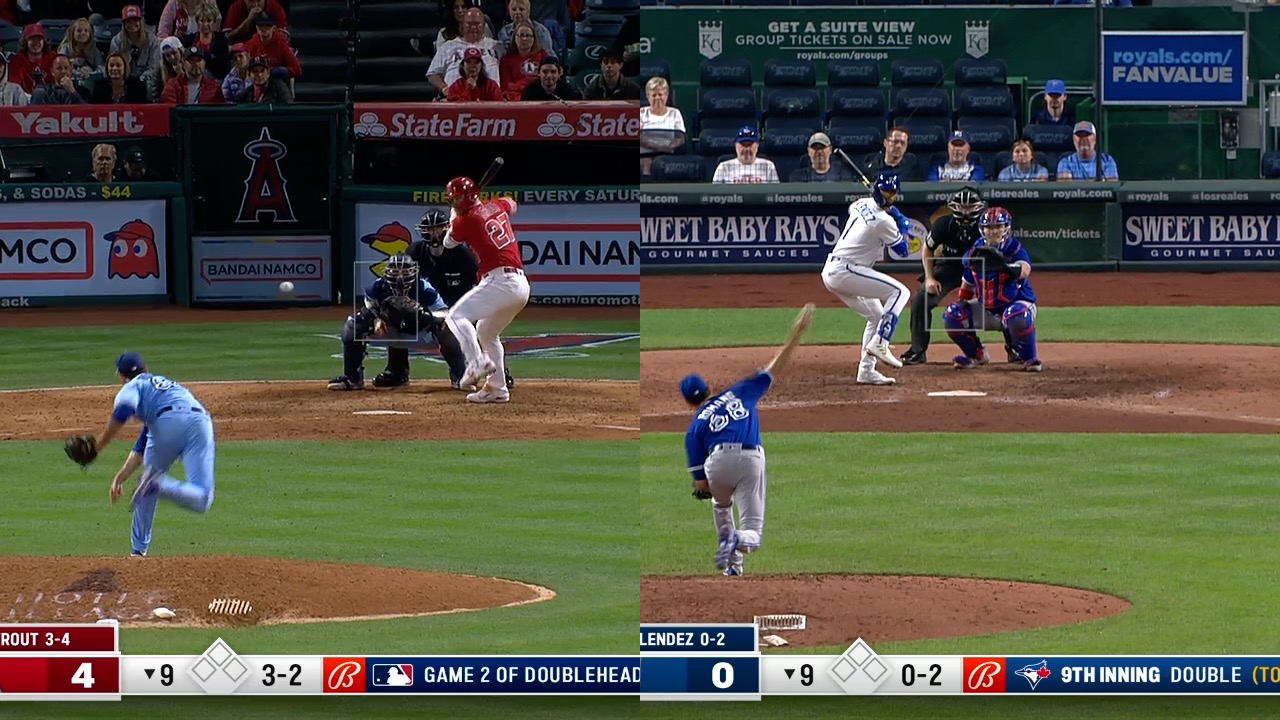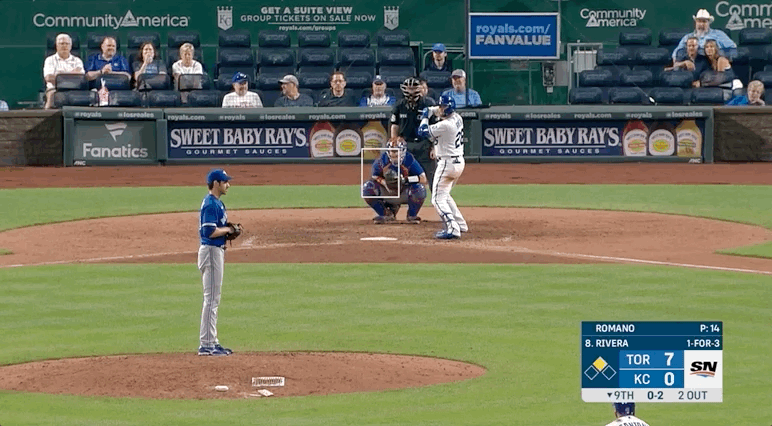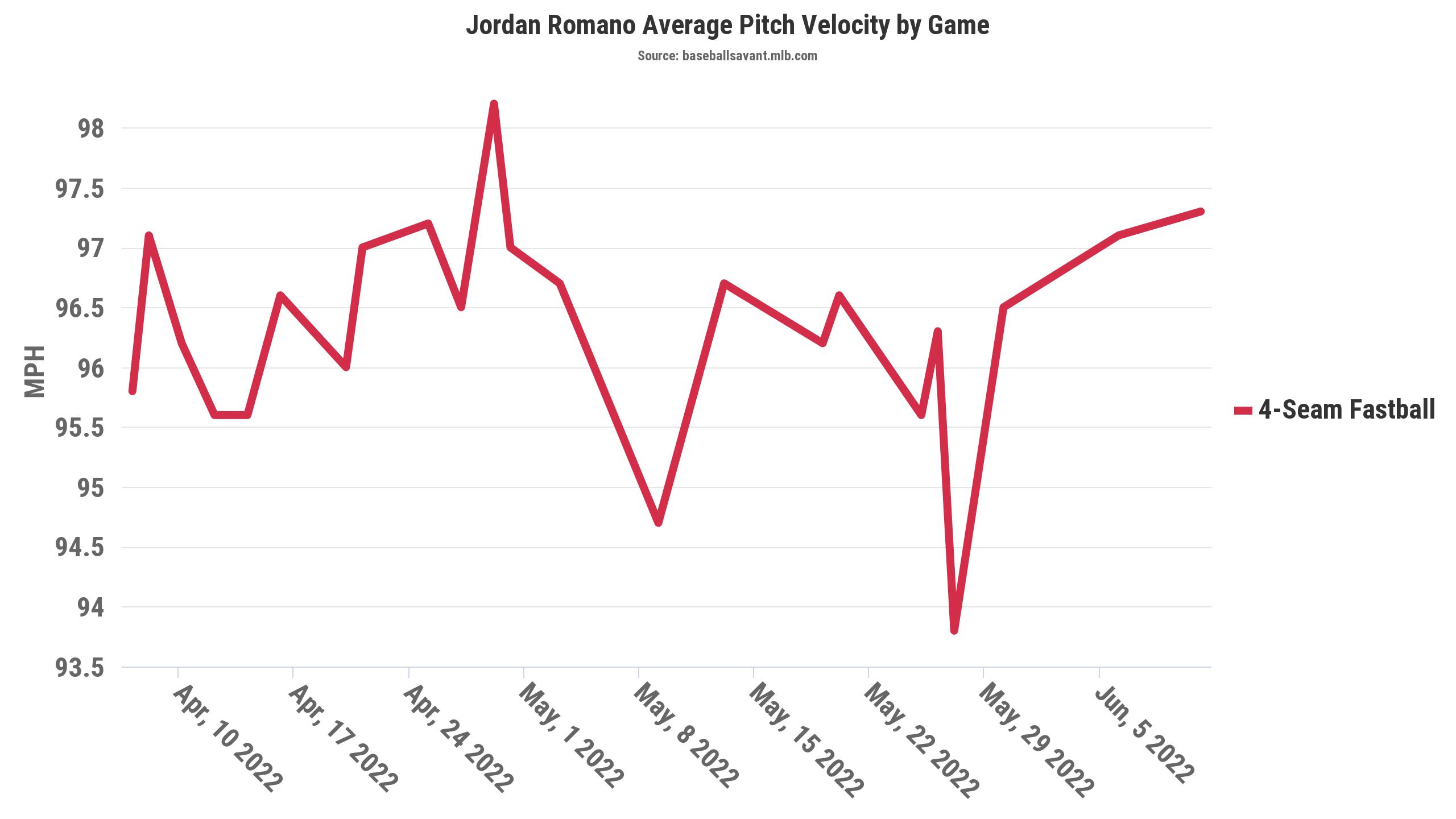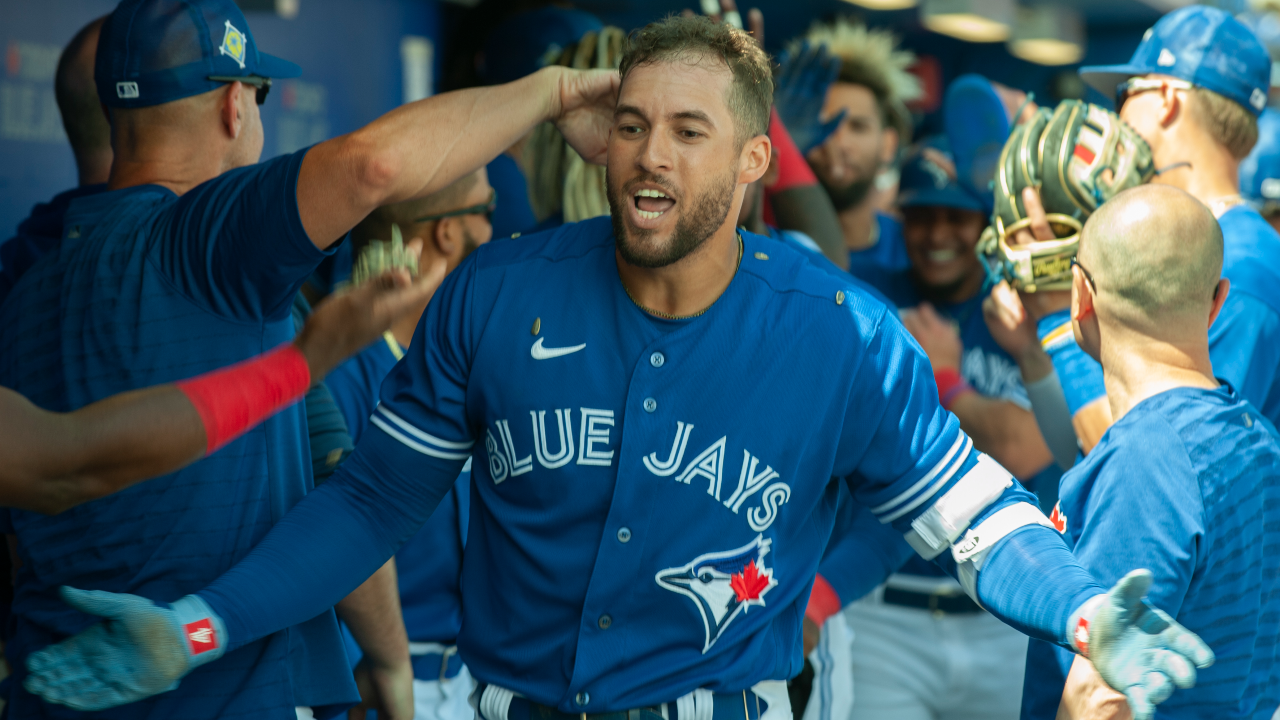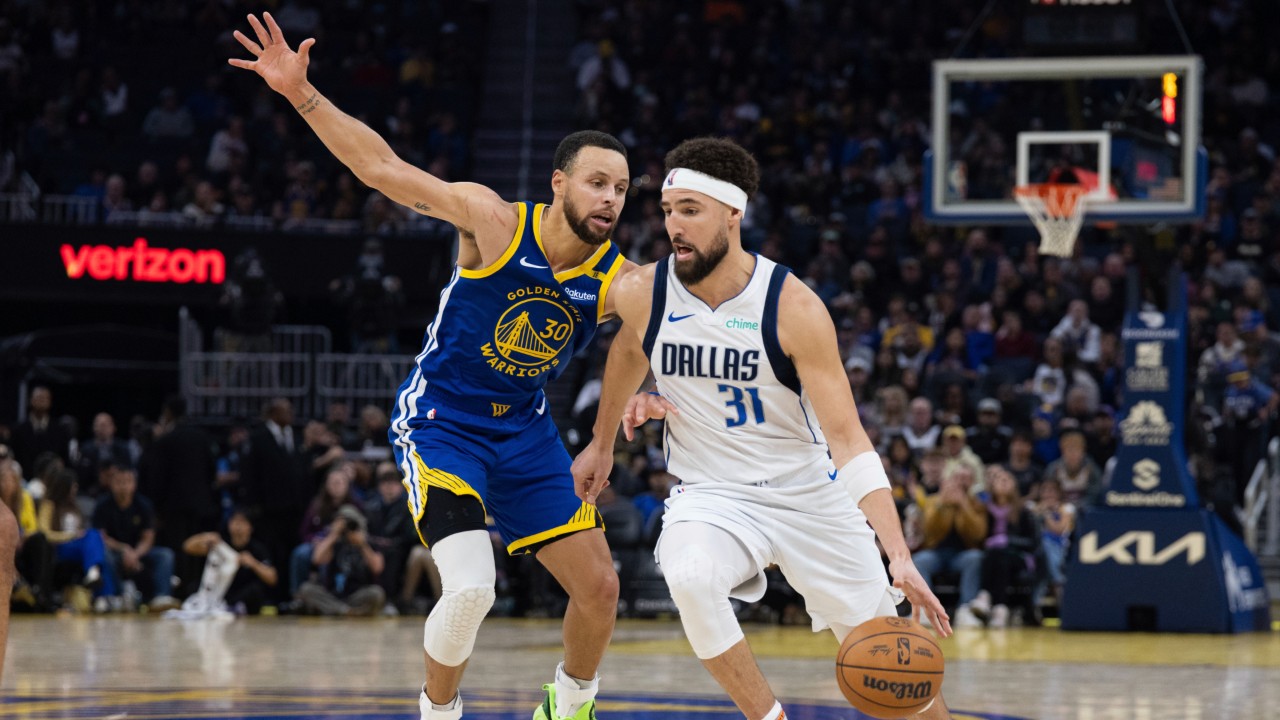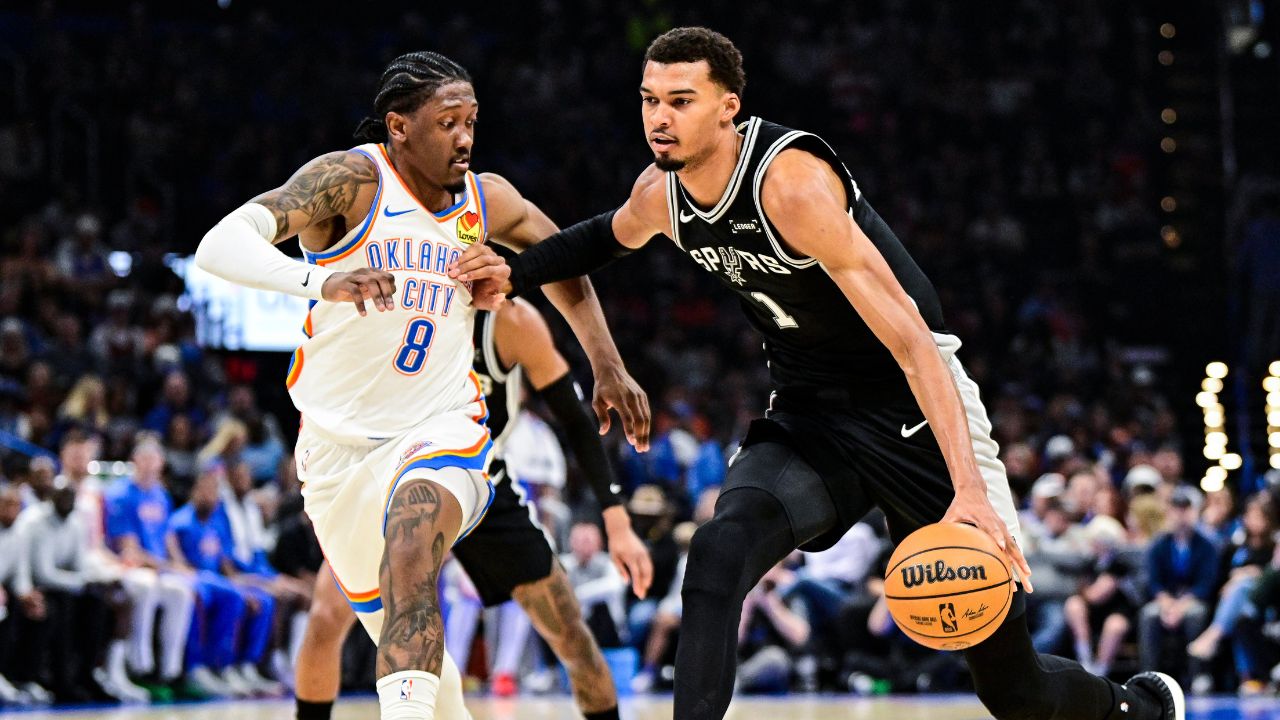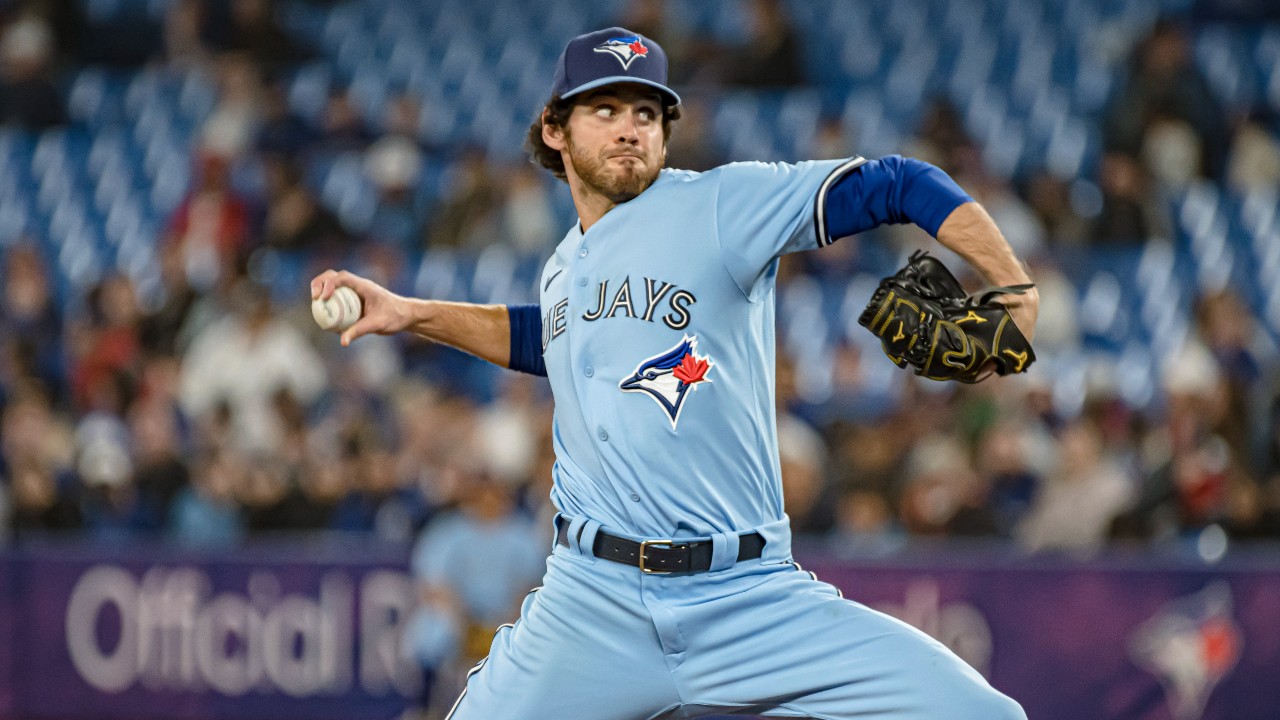
KANSAS CITY — Merely look at the game logs and it appears Toronto Blue Jays closer Jordan Romano’s had a pretty easy month. After pitching 12 times in April, then 10 times in May — including a demanding run in which he appeared four times in six days — Romano began June with six consecutive days off. Then, following a smooth appearance against the Kansas City Royals last week, he had four more. The Blue Jays have played a dozen games in June and Romano’s appeared in only two of them.
For a guy who entered the month tied for third among MLB relievers in appearances and sitting fourth in average leverage faced, it’s a well-deserved break. But it’s unfair to even call it that. Because Romano’s been anything but idle.
He’s been lifting more in the gym; he’s increased the volume of his pre-game throwing program; he’s spent time in the video room with Blue Jays bullpen coach Matt Buschmann comparing video of his delivery from last season and this one, searching for subtle habits that have subconsciously crept into his mechanics over time.
And he’s regularly gotten off a mound — including twice in that six-day span earlier this month, when he threw a couple 15-pitch bullpens intended partly to help keep Romano fresh, and partly to help him work on a delivery inefficiency he and Buschmann found in that video.
Let’s see if you can find it yourself. On the left is Romano throwing his fastball during an outing against the Los Angeles Angels in late May; on the right is Romano throwing it in his first appearance of June against the Royals.
Not much perceptible difference there at full speed. Let’s slow it down.
See it now? Here’s the key — look at his back leg and hips:
When Romano’s mechanics are right, he’ll sit on his back leg at the height of his delivery, keeping it stiffer for longer before coming to the plate. And he’ll keep his torso more upright, rather than hunching forward slightly at the hips as he had been this season.
Buschmann describes it as “staying stacked.” It’s an athletic position that allows Romano to tap into the force he generates most efficiently while remaining directional towards the plate. Somewhere along the line, he developed a tendency to come out of that position just a moment too soon, leaning ever so slightly forward with a little bend in his back leg, which the Blue Jays believe could have been impacting his fastball velocity.
For what it’s worth, Romano’s average fastball velocity has been 96.3-m.p.h. this season, a tick down from the 97.6-m.p.h. he sat at in 2021. Off-season knee surgery — on Romano’s left landing leg — was one possible culprit of the slight decline. That delayed his typical winter throwing program and decreased the amount — and intensity — of lower-body work he was able to do in the gym. It was expected Romano might take a little longer to hit his stride out of spring training.
But as his velocity stayed down through May, Buschmann went looking for other possibilities. Which is when he found the delivery change. It’s a very subtle thing and difficult to pick up in real time. But the difference really materializes in Romano’s release point:
In late May against the Angels, Romano was releasing the ball a hair earlier. Last week against the Royals, thanks to staying upright and back on his stiffer right leg a moment longer, he was releasing the ball later. At the point the ball is coming out of his hand this month, it was already halfway to the plate in May:
“I feel like I was disconnecting a little bit early this year as opposed to last year,” Romano says. “I was just getting a little bit out of myself. I was a little too quick. I want that stiff back leg, straight up, nice and smooth. It helps me stay on a straight line to the plate. And it feels a lot easier. Like I’m throwing with less effort.”
The results were certainly encouraging, as Romano sat at 97-m.p.h. with his fastball against the Royals immediately following the tweak, twice touching 99. His second-last pitch of the night, a nasty 99.1-m.p.h. heater that caught the handle of Emmanuel Rivera’s bat, was the hardest pitch he’s thrown all season:
And on Sunday against the Tigers he was sitting at 97 again, reaching 98 three times against Victor Reyes — the final hitter he faced in a Blue Jays blowout. Romano’s two appearances this month rank within his four hardest-throwing outings of the season. And his average fastball velocity in each was higher than in any of his 10 May appearances:
Now, there’s probably a combination of things contributing to that. The mechanical adjustment, sure. But also the benefit of the breather he’s received this month. Even with all the work he’s been putting in behind the scenes, Romano admits he’s feeling as fresh as he has in a while.
“It feels like the ball’s coming out pretty good,” he says. “To have an extended break like that during the season — that doesn’t happen often. The rust thing is always in the back of your mind. But it gave me time to work on some stuff.”
The rust thing is a fine balance for high-leverage relievers like Romano, who have to manage their workload throughout a six-month season to avoid over-use and stay as healthy as possible for September and October, while throwing often enough to maintain arm conditioning and familiarity with performing in the high-stress situations inherent to their role.
It’s a fluid thing. During some stretches, you’ll pitch in more games than you don’t, as Romano did over the final week of May. During others, you won’t pitch at all, as he did over the first week of June. Sometimes, you’ll warm up to enter a game without ever taking the mound. Sometimes you’ll do that twice in a night.
Those warm-up pitches are thrown at high intensities, too, even though they don’t end up on a player’s FanGraphs page. They need to be factored into total workload. The Blue Jays track it all and constantly adjust programming depending on total volume, which includes in-game pitches, pre-game throwing, side sessions, gym work, and conditioning.
“It’s something that we’ve put a lot of time and energy into over the years — managing everything that they’re doing. Or at least being aware and cognizant of everything that they’re doing and trying to keep it consistent,” says Blue Jays GM Ross Atkins. “The one thing that you can’t recreate is in-game adrenaline. But you can recreate the throws, you can recreate effort. We’re trying to make sure that that stays balanced.
“There are times that we need to really pull back and there are times that we can ask to push — whether that be in the weight room, with extra physical conditioning, or with extra bullpen work. And those are all things we’re constantly managing and navigating.”
For Romano, that means regularly throwing what the Blue Jays call a “touch-and-feel bullpen” to maintain his arm conditioning and stay in tune with his mechanics. Any time he’s out of competition for three consecutive days, Romano will take the bullpen mound post-game and throw 15 pitches — just enough work to elevate his heart rate and expose his arm to stress but not so much that he couldn’t recover and make consecutive appearances the following two days.
“It’s a little bit easier than warming up to go into a game. It’s post-game. I’m working on some things. It’s not, ‘Hey, lock in, get hot — you’re going in for the ninth inning,’” Romano says. “That’s a little bit more intense. There’s a lot of adrenaline that comes with that.”
Of course, it’s still a baseball season. And unique situations arise. Like on June 5, when Romano began throwing one of those structured bullpens late in a game against the Minnesota Twins because it was a get-away day and the team had a flight to catch following the final out. The Blue Jays were down five runs with one out in the ninth. It seemed like a safe opportunity to get the work in.
But then a couple runners reached and Santiago Espinal hit a three-run shot. Then another got on, bringing the tying run to the plate. As Romano threw the 13th of his 15 touch-and-feel pitches, the bullpen phone rang.
“They were like, ‘Hey, you might actually go in this game. You should probably prepare yourself for that,’” Romano says. “So, I had to shut it down and try to flip that switch mentally. That was hard. Because I wasn’t thinking I was going to go out and face hitters. So, I had to take a minute or two to really lock it in. That was an interesting experience.”
That’s the stuff you won’t see in Romano’s game logs. The pre-game throwing program he’s dialled up the intensity on; the post-game bullpens he’s sneaking in; the added volume in the gym; the time in the video room studying film. It’s been a very productive month for Romano, even if you haven’t seen him on the mound all that often. His velocity’s back up; his mechanics are sorted out; he’s feeling strong, refreshed. And it’s showing up on the radar gun.
“It’s weird pitching late innings and closing out games. There’ll be times where you’re throwing a lot, there’ll be times when you’re not throwing a ton. Trying to find the right balance is always interesting,” Romano says. “It’s a fine line, right? You want to stay fresh. And I think the best way to fine tune things is to be in the game and compete. And that’s what I pride myself on — always being ready to go in the game no matter what. No matter what the circumstances are. That’s my job.”


